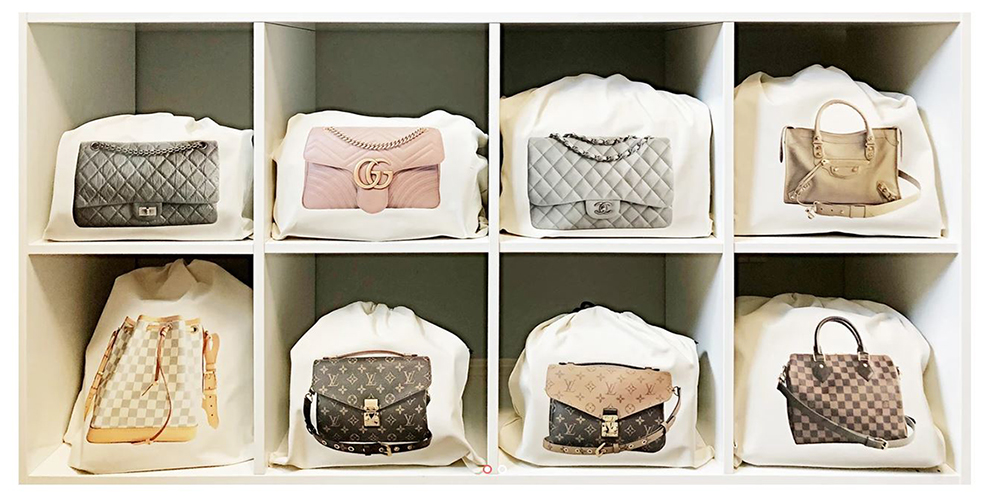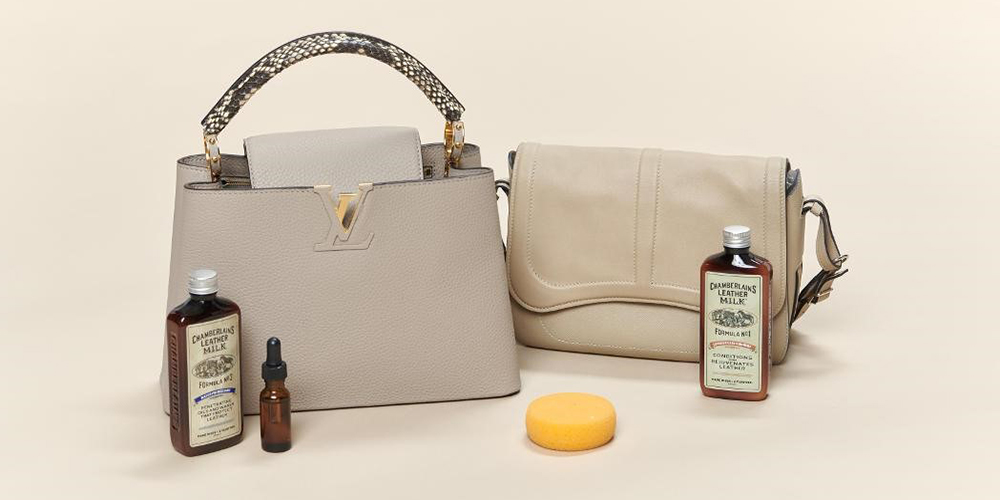HOW TO PROPERLY PREPARE YOUR BAGS FOR STORAGE

How bags are stored is usually a personal preference – there are avid collectors with a routine, and there are those who don’t store their bags at all. But is what you’re doing (or not doing) causing more harm than good? Here is some insight into ideal handbag storage, as this will prolong the life of your bag, allowing it to retain its maximum value and be used for years to come.
PROPER STORAGE PREPARATION
Whether you decide to wear your bag year-round or keep it in rotation with one or more bags, it’s always necessary to prepare your bag for storage. This seems counterintuitive since storage itself is generally a type of care for your bag. You would be correct, but certain conditions will not optimize your bag’s lifespan and making sure it’s properly prepped for storage is imperative.

Step One: Clean and Condition
The first step of preparing your bag for storage is the most important. Cleaning and conditioning your bag will guarantee that your bag is perfectly cared for before going in.
First, make sure that your bag is clean. For Leathers & Slick Materials like Patent Leather or Coated Canvas: we recommend these be wiped down with unscented baby wipes and spot cleaned with a specialized cleaner. Non-alcoholic baby wipes won’t leave behind residue and are safe for most materials. Use a leather cleaner to wipe down your bag and rid its surface of impurities. For woven textiles and fabrics: deep stains and dirt may need to be professionally removed. Light marks and stains can be lightly treated with a wipe. For suede: it is recommended that a suede brush is used for light dirt and marks. Anything more substantial than that may need to be professionally treated and cleaned.
For the spot treatment of leather, we recommend an alcohol-based spot cleaner like Fiebings Spot Remover. These products should be used with a light hand and extreme caution. Always spot test before treating larger areas. I use this cleaner on many of the common spot wear issues including but not limited to white scuffs on patent, dirt on leather corners, small stains and water spots, and handle wear.
After cleaning and spot treatment is complete, it is necessary that the bag is conditioned. Leather lotions and milks are great options. Leather conditioners have small amounts of wax and oil that are good for leather and will make sure that there is enough moisture in the material to keep it supple over time yet not overly saturated. Be sure to follow instructions for the conditioner you use, as a proper application is important. Leather conditioning is not recommended for suede and sueded leathers.
Step Two: Dry It Out
The second step is to dry out your bag. Make sure you give your bag at least 4-6 hours of airing out in a space with good ventilation, preferably with a fan that is not directly facing your bag. Not only will this help dissipate any odors that could be attached to the bag, but it will evaporate any moisture that may have been accumulated during wear. Don’t worry, this should not affect the conditioner that you applied previously. Do not dry out with a heater, radiator, or in direct sunlight. This will likely damage your bag.
Step Three: Stuff, Tuck, and Cover
The final steps are dependent on the shape and material of your bag. You must stuff your bag so that its structure is supported. If under-stuffed, you risk your bag creasing permanently or becoming misshapen. However, if you over stuff a bag, the permanent result will be stretching and bulging of the material.
If your bag has a long chain, it’s important that you do not store it with the chain laying on the bag’s exterior if possible. Over time, your bag will have contact with the chain’s weight and will cause indentations that cannot be removed. If the interior of your bag is fabric, it’s safe to tuck the chain inside the bag. If the interior is leather, I recommend the same, but first gathering the chain in a pouch and placing it in the interior of the bag; this is doable with either an attached or unattached chain.
The handles of your bag, if present, should be poised in an upright position. If handles are stored resting against the body of the bag, there is a high risk for indentation, discoloration, and even damage if the store environment’s temperature is too high. Many bag handles have wax edges, which can stick to and ruin the body material. If your bag has two handles, wrapping both handles together with a piece of ribbon or gauze to tie them up together will suffice; do not use colored materials as they may stain the handles.

We highly recommend that a bag is stored in a dust bag. Bags have a tendency to discolor over time, especially when exposed to prolonged artificial or natural light. Leather oxidizes naturally, but when properly stored, this oxidation process can be delayed. If you want to be aware what bag is in which dust bag, apply a label or photo to the exterior that will help you identify it.
You can even have a little fun with your storage options to personalize it while keeping it functional. DustyLuxeBags offers a great alternative to designer branded dust bags by printing full-color images of designer handbags on the exterior of a natural colored cotton blend bag.
If you obsess over handbags as I do, then you know caring for handbags is not something that should be taken lightly. For all the wear we put our bags through, it is important we show them some love. Plus, this routine will ensure that your bag will thrive and continue to bring you enjoyment for years to come.












